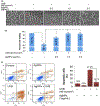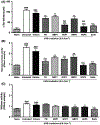Drug delivery strategies for chemoprevention of UVB-induced skin cancer: A review
- PMID: 29150967
- PMCID: PMC8691077
- DOI: 10.1111/phpp.12368
Drug delivery strategies for chemoprevention of UVB-induced skin cancer: A review
Abstract
Annually, more skin cancer cases are diagnosed than the collective incidence of the colon, lung, breast, and prostate cancer. Persistent contact with sunlight is a primary cause for all the skin malignancies. UVB radiation induces reactive oxygen species (ROS) production in the skin which eventually leads to DNA damage and mutation. Various delivery approaches for the skin cancer treatment/prevention have been evolving and are directed toward improvements in terms of delivery modes, therapeutic agents, and site-specificity of therapeutics delivery. The effective chemoprevention activity achieved is based on the efficiency of the delivery system used and the amount of the therapeutic molecule deposited in the skin. In this article, we have discussed different studies performed specifically for the chemoprevention of UVB-induced skin cancer. Ultra-flexible nanocarriers, transethosomes nanocarriers, silica nanoparticles, silver nanoparticles, nanocapsule suspensions, microemulsion, nanoemulsion, and polymeric nanoparticles which have been used so far to deliver the desired drug molecule for preventing the UVB-induced skin cancer.
Keywords: UVB radiation; chemoprevention; drug delivery strategy; skin cancer.
© 2017 John Wiley & Sons A/S. Published by John Wiley & Sons Ltd.
Figures









References
-
- Simões M, Sousa J, Pais A. Skin cancer and new treatment perspectives: A review. Cancer Lett. 2015;357:8–42. - PubMed
-
- Armstrong BK, Kricker A. The epidemiology of UV induced skin cancer. J Photochem Photobiol, B. 2001;63:8–18. - PubMed
-
- Narayanan DL, Saladi RN, Fox JL. Ultraviolet radiation and skin cancer. Int J Dermatol. 2010;49:978–986. - PubMed
Publication types
MeSH terms
Substances
Grants and funding
LinkOut - more resources
Full Text Sources
Other Literature Sources
Medical

